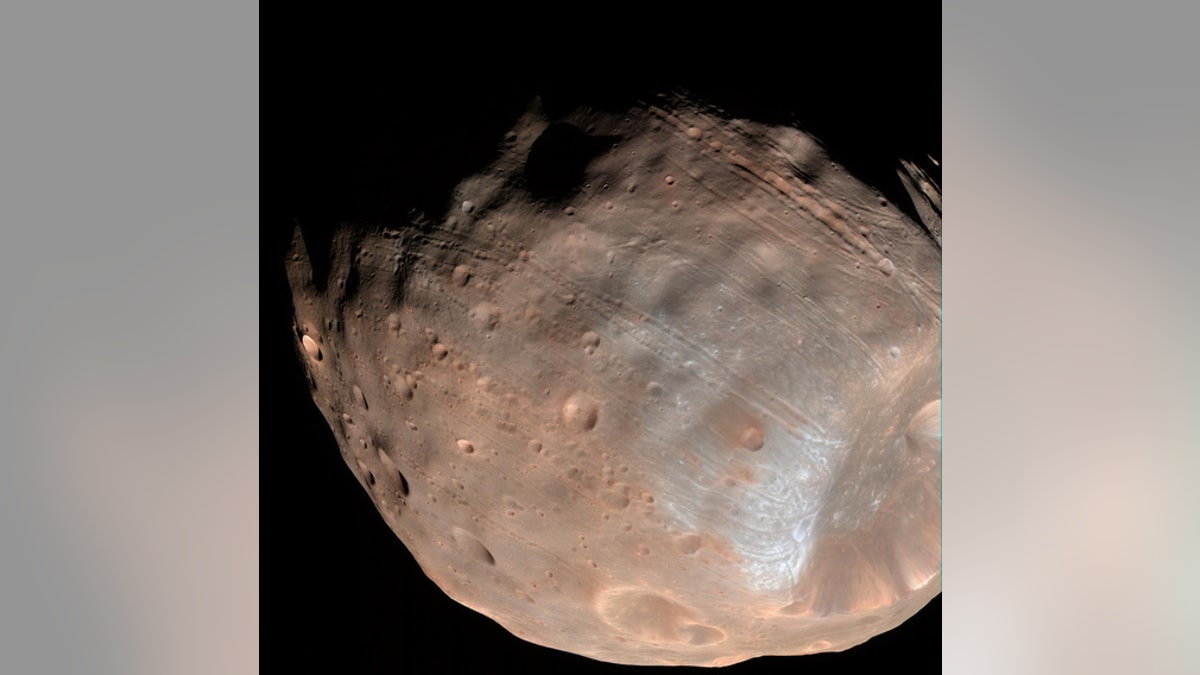
Mars' moon Phobos (NASA/JPL-Caltech/University of Arizona). (NASA/JPL-Caltech/University of Arizona)
Mars’ doomed moon Phobos may leave its parent planet a parting gift. A new study shows the moon is likely to break apart before it hits the atmosphere, creating a debris ring that will encircle Mars for millions of years.
The research, published in this week’s Nature Geoscience, follows a report earlier this month that not only is Phobos losing altitude due to Mars’ gravity, it also already is showing signs of structurally stress from tidal forces.
NEWS: Mars’ Moon Phobos Is Double-Doomed
Phobos survived a giant impact early in its history, but damage from the crash left the moon weak, say Benjamin Black and Tushar Mittal, planetary scientists with University of California at Berkeley.
Their study shows that in 20 million to 40 million years, Phobos will break apart, leaving a cloud of debris that will relatively quickly assembly into a ring around Mars.
Initially, the ring will be as dense as Saturn’s rings today, and it will last for up to 100 million years, the study shows.
For Earthlings, Phobos’ demise presents a unique opportunity to study what may be the solar system’s last inwardly migrating moon.
PHOTOS: NASA Spacecraft’s Epic 10 Years of Mars
“Inwardly migrating satellites — some of which may break up tidally, some of which may collide with their primaries — are likely to be an under-appreciated and important component of planetary evolution,” the authors note.
“Phobos offers the last possible glimpse of the signatures and processes that applied to inwardly migrating moons and the interplay with ring formation early in our solar system’s history.”








































